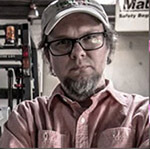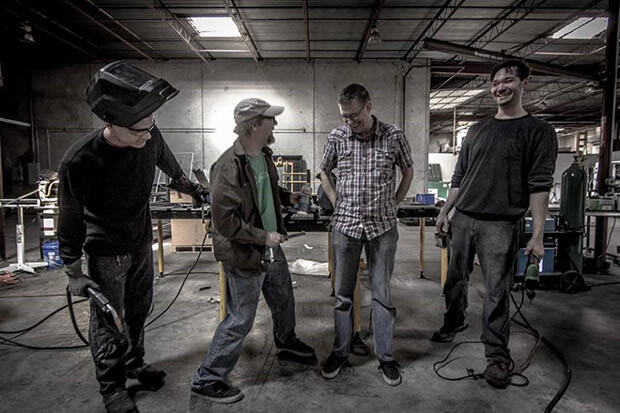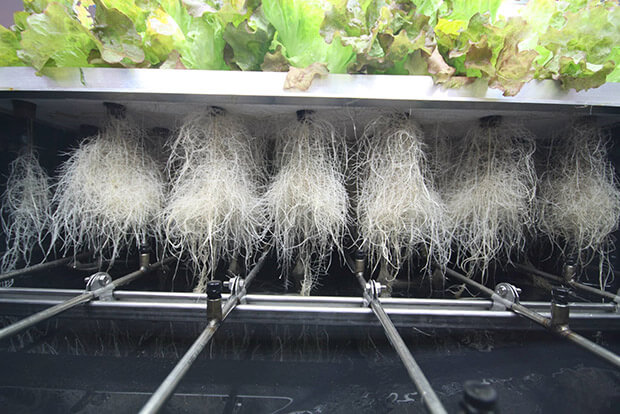Indoor Harvest Corp. is a full service design-build engineering firm focused on the indoor farming industry. The Company provides engineering and mechanical services for both greenhouse and building integrated agriculture production. Indoor Harvest Corp. has raised over $2 Million in seed capital and is currently raising $5 Million in Series A funding to expand operations. The Company is publicly owned and currently trades on the OTCQB under the ticker symbol INQD. Below is our interview with Chad Sykes, Chief Executive Officer at Indoor Harvest Corp:

Q: Chad, how would you briefly describe what Indoor Harvest Corp is all about?
A: In the simplest terms, I’d describe us as a mechanical contractor for the indoor farming industry. However, we take things a step further and also offer cutting edge engineering and design-build services. With interest in all forms of indoor farming accelerating at a rapid pace, we aim to deliver state-of-the-art, high efficiency solutions for every aspect of indoor cultivation: watering, nutrient delivery, lighting and HVAC – plus an expandable and upgradable modular infrastructure to house it all. We provide clients with engineering services that focus on building a foundational infrastructure for their mechanical operations. Many times central planning like this is overlooked, and systems are installed that do not scale well, or are not very efficient.
 Recommended: Cleantech Startup Smart Utility Systems Aims to put H2O Conservation in Your Hands
Recommended: Cleantech Startup Smart Utility Systems Aims to put H2O Conservation in Your Hands
Q: What advantage does Indoor Harvest Corp have over its competitors?
A: Our biggest advantage is our knowledge and expertise. Our team has been involved in indoor farming for many years and we’ve worked with some of the biggest indoor farming operations out there. I personally began my involvement with vertical farming in late 2007, when I was asked to help prepare a business plan and provide investor relations for the very first vertical farm in operation in the United States: Angel Eyes Produce. Since then I’ve been following the industry – and designing for it – at every step along the way.
In addition to the experience we offer, we have also done considerable R&D, developing better and better production platforms and constantly refining our construction methods. We’ve adopted a standardized, fixture-based approach to mechanical design that our competitors do not offer. This fixture based approach allows us to offer complete flexibility in the design of vertical farms and indoor farming platforms. We can provide our clients with a completely custom installation at any scale, tailored to their specific needs. Our competitors offer designs that have limited flexibility, lesser efficiency, and problems with up-scaling — and that in many cases require cumbersome licensing.
Recommended: Intelligent Irrigation Solution Blue Marble Saves Money, Water, and the earth!
Q: What have been the main challenges for the vertical farming and indoor farming industry so far, and what do you see in terms of growth potential?
A: The biggest challenges facing the industry right now is a lack of available production data and a lack of skilled labor. We have potential clients contacting us every day who do not have a sensible business plan — and in many cases do not even have a master grower. They look to us to provide the data that will fill these gaps in their business plans — and it’s simply not possible for us to do this for everyone who contacts us. There are also very few people with solid, successful experience in actually operating an indoor farm. Indoor growing requires a knowledge and skill set that is very, very different from traditional farming methods.
We’re working to reduce these barriers through an open data project we’re developing in partnership with the City of Pasadena. We’re currently aiming to crowdfund $5 Million dollars from accredited investors in a Series A round to expand this project to include not just an operational indoor grow, but a vertical farm research and education campus as well. The City of Pasadena is providing us with various economic incentives, such as low cost properties and tax breaks. We’re also partnering with various non-profits like the Harris County BUILD Health Partnership and numerous other major groups. The project will have a strong focus on research and education that we hope will provide the industry with the data it needs and the kind of skilled work force that can continue to innovate and move the industry forward.
 Recommended: RocketClub – Earn Startup Stock For Promoting Cool Products
Recommended: RocketClub – Earn Startup Stock For Promoting Cool Products
Q: What can we expect from Indoor Harvest Corp in 2016?
A: We’re currently working on several design-build and research projects for indoor farming. The demand has been more than we can handle, so 2016 should be a pretty exciting year for us as we scale up to meet that demand. We continue to build partnerships that also help increase our project pipeline. In just the last two months, we’ve had over $6 Million in requests for proposals, and we are currently building a micro-green vertical farm for a client in Houston. We’ve been receiving inquiries about designing state-of-the-art indoor farms from all over the world. I would expect that by mid 2016, we should have several more projects under construction or nearing construction.
Q: What’s the best thing about Indoor Harvest Corp that people might not know about?
A: I think it’s the sheer size of this industry – and our advantageous position within it. We’re providing cutting edge design-build services to an industry that’s expected to grow from $400 Million to almost $2 Billion by 2020. And we currently have very few direct competitors with our level of funding, much less our technical knowledge. The technologies we have developed — and the technologies we’re currently developing — are all state-of-the-art in terms of efficiency and expandability.
I think we’ve been overlooked by the media and by industry advocates thus far largely because we haven’t had an actual, full scale operational farm that we can point to. But all that will change in 2016, as we start taking the knowledge we’ve gained through our extensive R&D, and actually apply it to the build-out of full scale projects. We’ll have our first smaller scale owner-operator vertical farm built for a client in early January. If our sales pipeline is any indication of growth, we expect to be building several more substantial indoor farms in 2016.
Activate Social Media:


